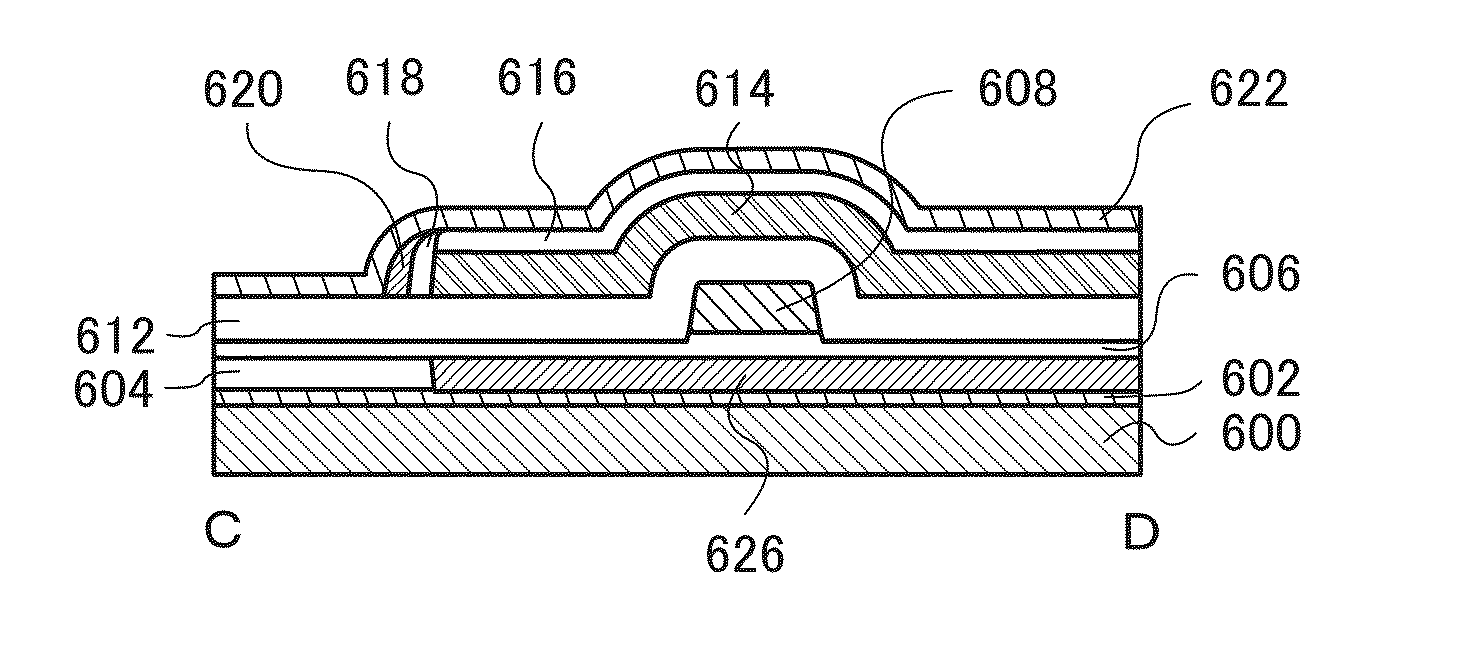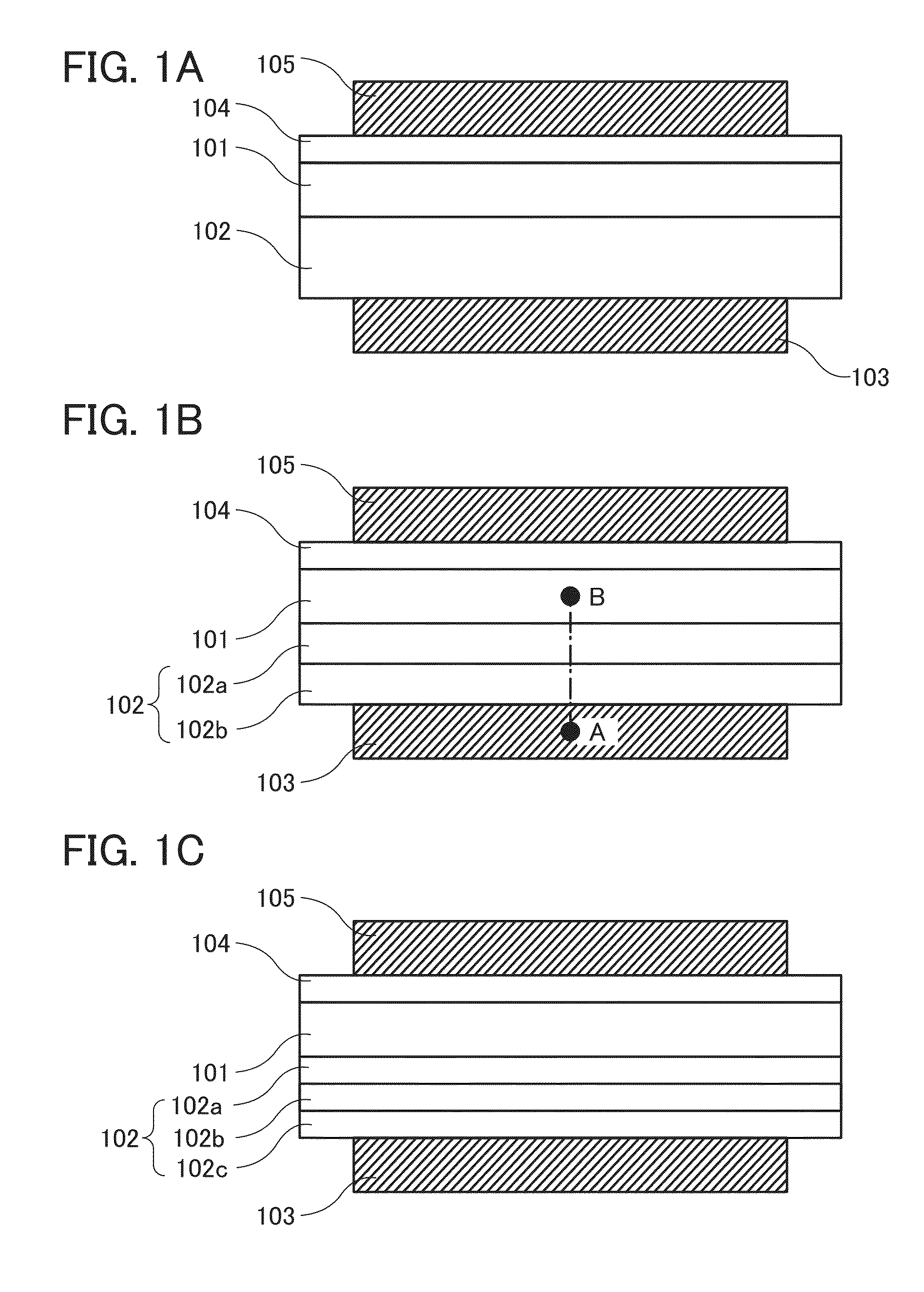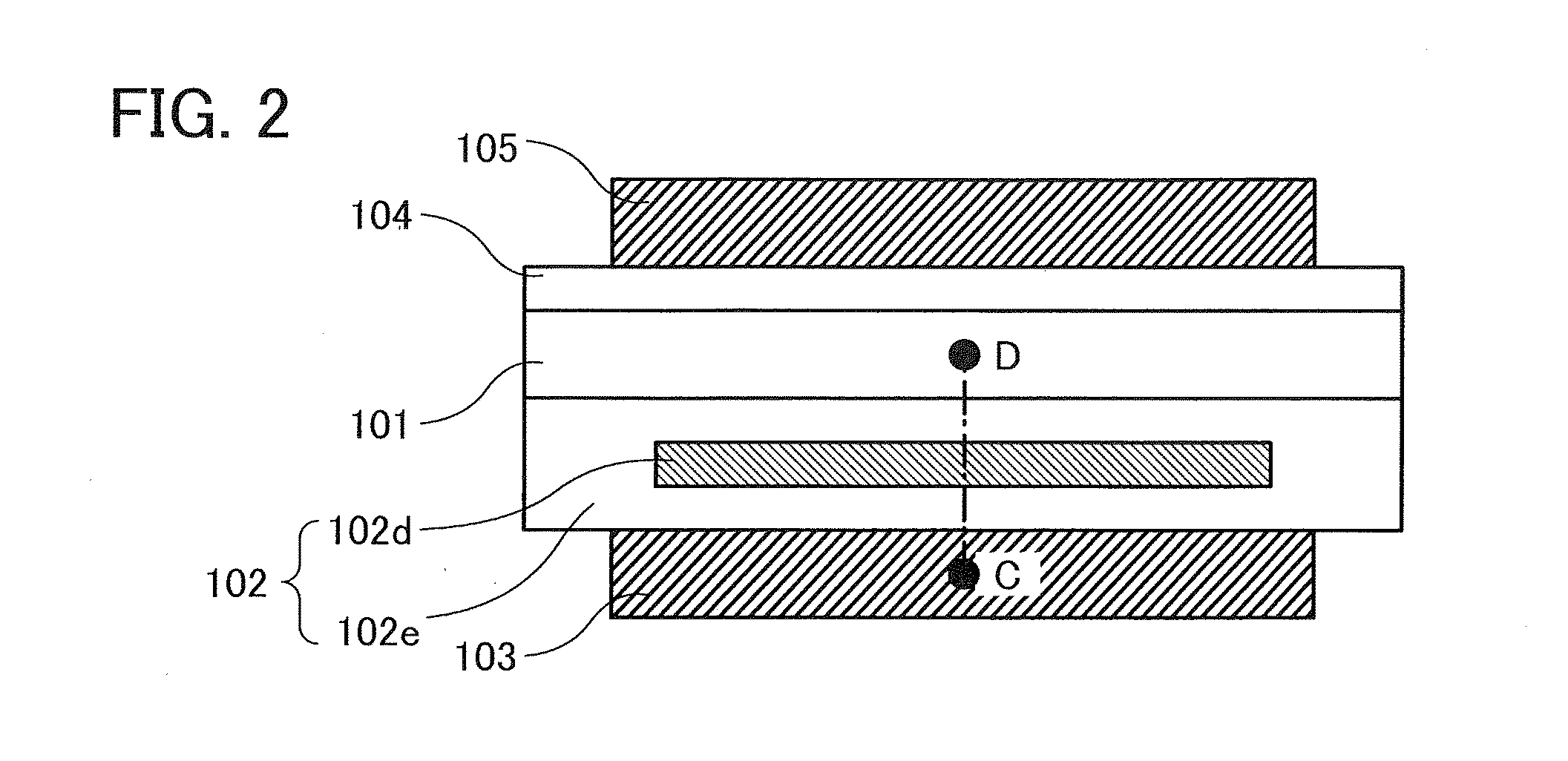Semiconductor device and manufacturing method thereof
a semiconductor and semiconductor technology, applied in the direction of semiconductor devices, electrical equipment, transistors, etc., can solve the problems of low power consumption of display devices for which a transistor including an oxide semiconductor is used, and achieve the effects of low power consumption, high reliability, and low off-state curren
- Summary
- Abstract
- Description
- Claims
- Application Information
AI Technical Summary
Benefits of technology
Problems solved by technology
Method used
Image
Examples
embodiment 1
[0089]In this embodiment, a structure of a semiconductor device including a semiconductor, an electron trap layer, and a gate electrode, the operation principle of the semiconductor device, and a circuit that uses the semiconductor device are described. FIG. 1A shows a semiconductor device including a semiconductor 101, an electron trap layer 102, a gate electrode 103, a gate insulator 104, and a gate electrode 105.
[0090]The electron trap layer 102 may be, for example, a stack including an insulator 102a and an insulator 102b as illustrated in FIG. 1B. Alternatively, the electron trap layer 102 may be a stack including the insulator 102a, the insulator 102b, and an insulator 102c as illustrated in FIG. 1C. Alternatively, the electron trap layer 102 may be a stack including more insulators. Alternatively, as illustrated in FIG. 2, the electron trap layer 102 may include an insulator 102e and an electrically isolated conductor 102d in the insulator 102e. The insulator 102e may be comp...
embodiment 2
[0129]In this embodiment, a structure of a transistor of one embodiment of the present invention is described with reference to drawings.
[0130]FIGS. 5A to 5C are a top view and cross-sectional views that illustrate a transistor of one embodiment of the present invention. FIG. 5A is the top view. FIG. 5B illustrates a cross section taken along the dashed-dotted line A-B in FIG. 5A. FIG. 5C illustrates a cross section taken along the dashed-dotted line C-D in FIG. 5A. Note that for simplification of the drawing, some components are not illustrated in the top view of FIG. 5A. In some cases, the direction of the dashed-dotted line A-B is referred to as a channel length direction, and the direction of the dashed-dotted line C-D is referred to as a channel width direction.
[0131]The transistor illustrated in FIGS. 5A to 5C includes an insulator 602 over a substrate 600, an insulator 604 over the insulator 602, an insulator 606 over the insulator 604, an oxide semiconductor 608 over the ins...
embodiment 3
[0183]In this embodiment, a method for controlling the threshold voltage of a transistor is described with reference to FIGS. 13A and 13B. FIG. 13A is circuit diagrams illustrating a transistor 120 and a transistor 140. A dotted line in the circuit diagram denotes an electron trap layer. FIG. 13B is cross-sectional schematic diagrams illustrating the transistor 120 and the transistor 140.
[0184]The transistor 120 and the transistor 140 are formed over a substrate 601. The transistor 120 includes an oxide semiconductor 609a, a source electrode 611a, a drain electrode 611b, a gate electrode 627a, and an electron trap layer 621a. The electron trap layer 621a includes a region overlapping with the oxide semiconductor 609a. The transistor 140 includes an oxide semiconductor 609b, a source electrode 611c, a drain electrode 611d, a gate electrode 627b, and an electron trap layer 621b. The electron trap layer 621b includes a region overlapping with the oxide semiconductor 609b. The transisto...
PUM
 Login to View More
Login to View More Abstract
Description
Claims
Application Information
 Login to View More
Login to View More - R&D
- Intellectual Property
- Life Sciences
- Materials
- Tech Scout
- Unparalleled Data Quality
- Higher Quality Content
- 60% Fewer Hallucinations
Browse by: Latest US Patents, China's latest patents, Technical Efficacy Thesaurus, Application Domain, Technology Topic, Popular Technical Reports.
© 2025 PatSnap. All rights reserved.Legal|Privacy policy|Modern Slavery Act Transparency Statement|Sitemap|About US| Contact US: help@patsnap.com



